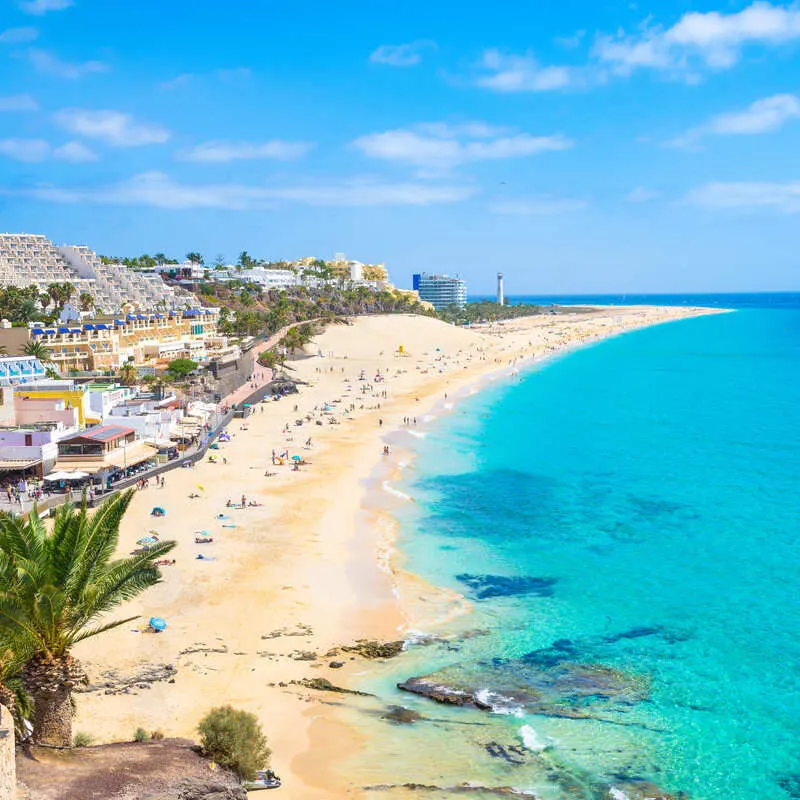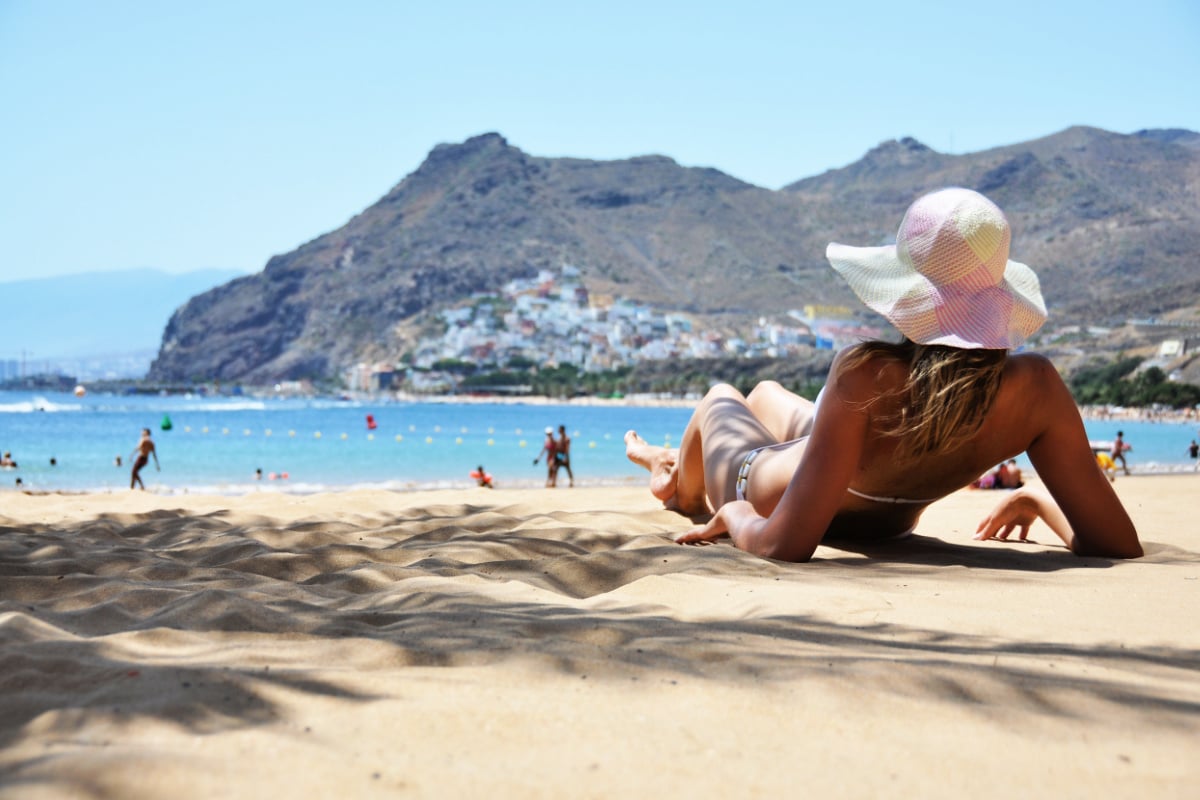Share the article
Last updated
We all have places we love and want to visit again and again.
Places where the weather is always perfect, the people are as warm and welcoming as the water, and there is always something different to see and do.

For me that place is the Canary Islands. I love the Canary Islands so much that I am currently visiting them for the third time in 12 months!
Here’s why these beautiful islands are my favorite winter holiday in Europe:
Sunshine all year round
One of the main attractions of the Canary Islands is that they offer sunshine all year round. This makes them a great place to escape if you want to get away from the brutally cold winters of Northern Europe and North America!
Even in the coldest months of January and February, temperatures rarely drop below 21 degrees Celsius (70 degrees Fahrenheit) and the sea temperature averages 22 degrees Celsius (72 degrees Fahrenheit), so it is also warm enough to swim in the sea all year round to swim.
As an added bonus, the sun rises around 6:30 am and sets around 7:30 pm, and it rarely rains in the Canary Islands.
Although this winter is the low season in the Canary Islands, the number of visitors is very low. This means you have many of the best beaches to yourself and can explore them without any crowds.
Visiting this week as the winter season starts, the weather is nice, the number of visitors is very low and I didn’t need any reservations for the restaurants I wanted to eat at or the activities I wanted to book. This includes snorkeling tours, surfing lessons and even a camel safari.

Although there is public transport available, I always rent a car in the Canary Islands. This is because some of the most beautiful beaches can be remote and difficult to access without a beach.
It also gives you the freedom to explore the islands at your own pace and find hidden gems that are off the beaten track.
You can pass a sign advertising a renowned hiking trail, a beautiful beach, or even that impromptu camel ride, and simply turn off if you want to experience something new.
Bufadero on Gran Canaria is a good example of this. This cove forms a beautiful natural swimming pool at low tide and is the perfect place for a beach day, but is best reached by car.

Fuerteventura is home to the famous ‘popcorn beach’, and this can only be reached by driving along a bumpy and narrow dirt road.
This unusual beach is not covered with sand but with dead algae, which looks better than it sounds! It looks like popcorn kernels. It is an amazing natural phenomenon and a fantastic place for a photo opportunity.
Endless activities
The Canary Islands are a great location for active adventurers and each island offers something different.

I love Fuerteventura because it offers some of the best surfing in Europe, especially in winter when surfers descend on the island to catch the biggest waves.
Corralejo is considered the surfing capital of the island and the north coast of Fuerteventura is called the Hawaii of Europe thanks to its huge waves. The surfing community in Fuerteventura is huge and incredibly welcoming, even to enthusiastic beginners.
If you’re a beginner who enjoys hitting the waves, try the Protest Surf School, one of the most highly regarded on the island. The instructor I worked with was friendly and funny and made me feel extremely comfortable.
Tenerife is the best island for hikers and also has the most marked routes. All of the Canary Islands are volcanic, meaning the landscapes are exceptionally rugged and beautiful for hikers and hikers.

Lanzarote is home to Europe’s first underwater sculpture museum which I reliably know is incredible for divers.
Lanzarote is the most famous of the Canary Islands for divers and the underwater sculpture gallery is a unique experience, away from the norm you would expect while diving. But you’ll also find a spectacular array of underwater fauna to explore if you’re looking for something more traditional.
Travel between the islands
There are 8 main Canary Islands, but only 4 of these are considered major tourist centers. These are Fuerteventura, Gran Canaria, Lanzarote and Tenerife. Tenerife is the largest island in the chain.
The islands are well connected and it is easy to travel between them. There are regular flights between the islands, but the most economical and often fastest way to travel is by ferry.

The journey between Fuerteventura and Lanzarote is a good example of this. These two islands are incredibly close to each other, meaning the ferry takes just 25 minutes and prices range between 20-35 Euros ($21-37 USD) depending on the operator you choose.
You can travel between islands for day trips or choose more than one holiday destination, allowing you to see as much of the Canary Islands as possible in a relatively short time.
If you’re staying in Fuerteventura, one of my favorite activities is taking the ferry from Corralejo to Lanzarote’s Timanfaya National Park to visit the active volcano.
This is a popular excursion option that allows you to experience two of the different Canary Islands in a relatively short holiday.

Although the Canary Islands are officially geographically part of Spain, they are close to the African coast. This explains why the weather here is much warmer than in mainland Spain and why the islands are often called ‘the eternal spring’.
There’s no place I’d rather go to escape a long and cold winter.
Read more:
Top 5 Travel Insurance Plans for 2023 from $10 per week
How to easily earn points for free travel

SUBSCRIBE TO OUR LATEST POSTS
Enter your email address to subscribe to the latest Travel Off Path breaking travel news, delivered straight to your inbox.
This article originally appeared on TravelOffPath.com





